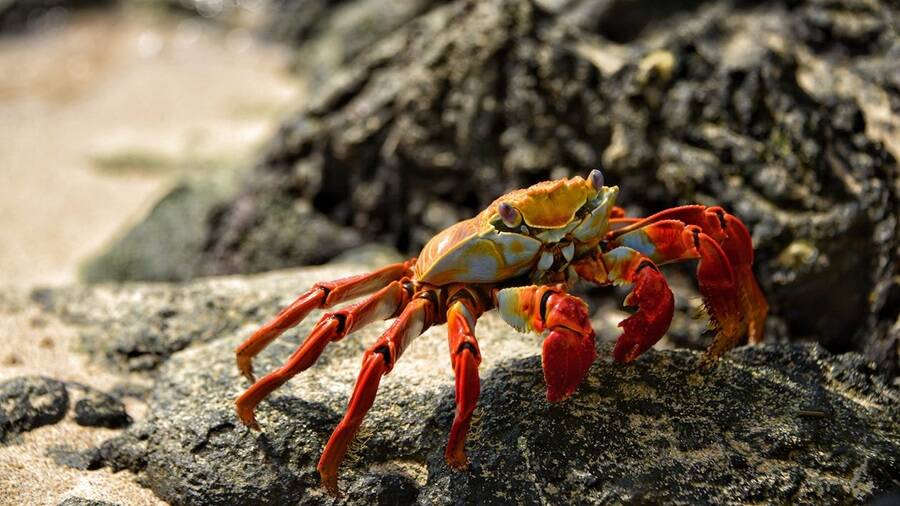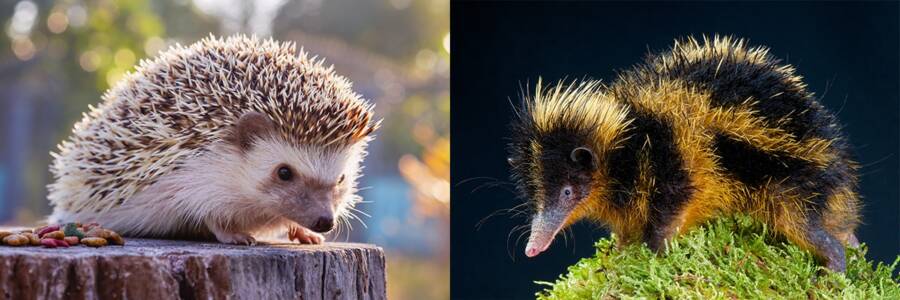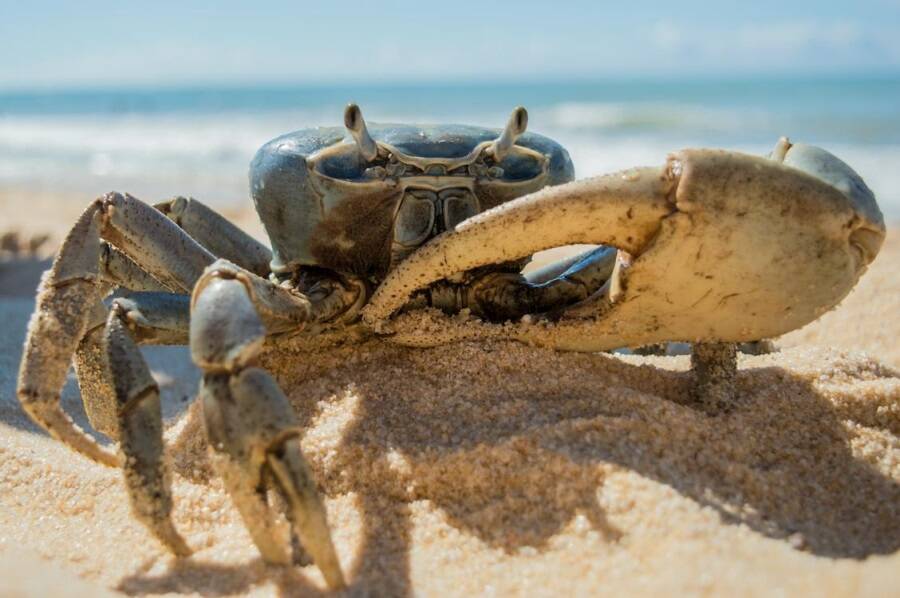A bizarre process that has seen many crustaceans evolve to take a crab-like shape, carcinization has long left baffled scientists searching for answers.

PexelsCreatures that have evolved via carcinization are characterized by a flat carapace and a tucked-in tail, which may provide certain evolutionary advantages.
In 2020, a viral meme made the rounds on the internet, playfully suggesting that all living things will eventually evolve to become crabs — including humans. And shockingly, this meme has at least some basis in fact. Evolution really does love the shape of the crab.
Over the years, several crustaceans have independently evolved to take on a crab-like shape, with its flat, rounded shell and tucked-in tail. This bizarre phenomenon is called carcinization. But to this day, scientists studying carcinization have been unable to determine why evolution seems to want to turn various creatures into crabs.
What Is Carcinization?
In 1916, evolutionary biologist L.A. Borradaile coined the term “carcinization” to describe a form of convergent evolution wherein a crustacean evolves into a crab-like form. Borradaile described the process as “one of the many attempts of nature to evolve a crab.”
But what, exactly, are the characteristics that make a crustacean “crab-like?” A carcinized crab has a folded pleon, or tail, and a wide, flat upper shell known as a carapace. While a lobster’s pleon is visible, carcinized crabs’ pleons are mostly hidden beneath their compact bodies.
When we talk about crabs, there are “true crabs” (Brachyura), and “false crabs” (Anomura), an order of crustaceans that encompasses non-crab decapods like hermit crabs and king crabs. In short, not all crabs are, in fact, crabs. Most true crabs have that “classic” carcinized shape, while Anomura have adopted a more crab-like shape through carcinization.
In carcinization, a crustacean typically begins with a longer, more narrow carapace with an exposed pleon. Over time, it evolves to develop a flatter, rounder, and undeniably crab-like look. The result is a bunch of unrelated crustaceans that look like they’re part of the same crab family.
How Carcinization Has Occurred Repeatedly In Nature

Joanna M. WolfeResearch shows that the crab-like body shape has developed several times in different groups of crustaceans via carcinization.
In March 2021, a study published in the journal BioEssays showed that at least five different crustaceans — some true crabs, some false crabs — have independently evolved to take on the form of a crab.
The study, which examined both fossilized and living crustaceans, showed that the shape emerged at least three times within the Anomura order. Researchers speculate that Brachyura and Anomura may have had a common ancestor that was not yet carcinized.
“This evidence suggests that indeed carcinization evolved independently in those groups,” said Javier Luque, one of the study’s co-authors, according to the American Association for the Advancement of Science.
Carcinization is clearly a recurring theme in the evolutionary history of crustaceans. Fortunately, this quirky trend seems to be exclusive to crustaceans, leaving humans and other primates untouched by the crab takeover.
But here’s the twist — carcinization isn’t necessarily a permanent change. Sometimes, crustaceans go through a “decarcinization” phase where they lose that crab-like body plan. In fact, this process has happened at least seven times.
“Crabs are flexible and versatile,” Luque told Live Science. “They can do a lot of things back and forth.”
The Science Of Convergent Evolution
Carcinization is a form of convergent evolution, a process in which two or more separate species independently evolve to develop similar traits. Through this process, two species that are not closely related might naturally select for similar qualities and come to resemble one another, taking on similar shapes, abilities, or color patterns.
This phenomenon often occurs when organisms live in similar habitats, and so gradually adapt similar characteristics that help them survive their environments. Astonishingly, these traits can evolve in organisms living in completely different parts of the world, and even in different moments in time.
For example, tenrecs, a type of spiky mammal endemic to Madagascar, bear a strong resemblance to hedgehogs, which are found in various parts of Europe, Asia, and Africa. However, while tenrecs and hedgehogs both evolved to have protective coats covered in spikes, they last shared an ancestor 160 million years ago.

USDAAlthough they look similar, hedgehogs and tenrecs evolved their spiny coats independently from one another over a period of millions of years.
Likewise, despite living millions of years apart, sauropod dinosaurs and giraffes both independently evolved long necks to help them reach leaves on the tallest branches.
The fact that carcinization is a recurring phenomenon suggests that there’s something seriously advantageous about the crab shape. Scientists are on the case, trying to uncover the secrets behind why this body type is such a hit in the evolutionary history of these clawed critters.
The Leading Theories Behind Carcinization
The reasons for carcinization remain unknown, but scientists have proposed various hypotheses in recent years. Joanna Wolfe, a Harvard researcher who led the 2021 study, explored some intriguing possibilities with her team.
One theory they explored is that the flat, round shape of a crab’s body might make burrowing and sideways scuttling more efficient compared to the more cylindrical bodies of other crustaceans. This shape can help a crab make a quick getaway in any direction without losing sight of a potential predator. A crab’s relatively compact shape might also give predators less surface area to grab onto, improving its chances of survival.
Still, Wolfe stressed that more research is needed to put these ideas to the test and uncover the real secrets behind these adaptations.

PexelsCrabs exhibit enhanced maneuverability and reduced vulnerability to predators due to their compact form.
Heather Bracken-Grissom, an Associate Professor from Florida International University and a senior author on the study, said that studying carcinization could potentially help biologists learn to predict how a certain phenotype or feature might evolve within a group over a period of millions of years.
In short, carcinization showcases the adaptability of decapod crustaceans in response to environmental challenges. Studying this phenomenon can provide valuable insights into the complex processes of natural selection and how organisms creatively adapt to their surroundings over evolutionary time.
As Bracken-Grissom told Popular Science in 2020, “There has to be some kind of evolutionary advantage to be this crablike shape.”
After learning about the mystery of carcinization, read about the Japanese spider crab, the biggest crab in the world. Or, meet the coconut crab, the monstrous bird-eating crustacean that terrorizes islands across the Indian and Pacific Oceans.





